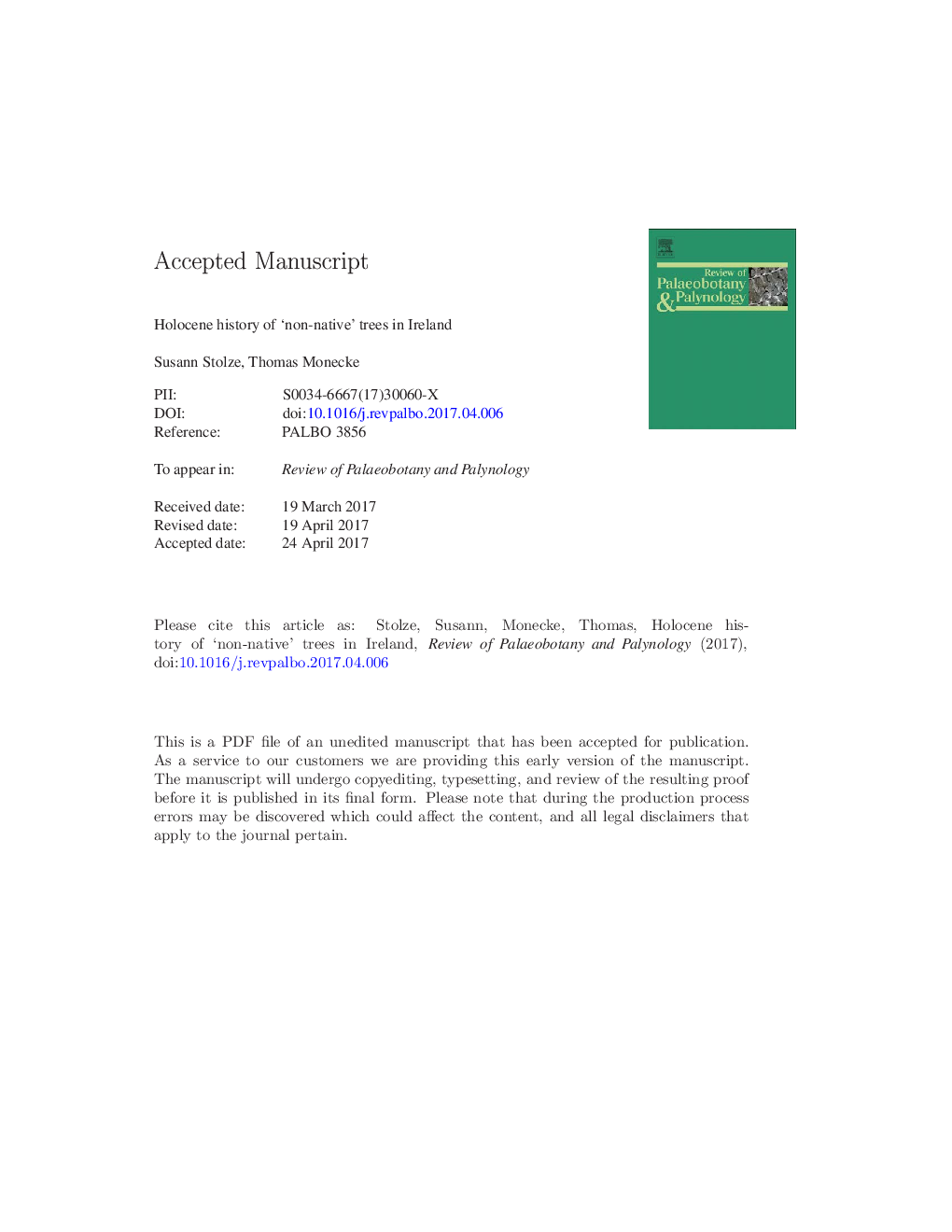| Article ID | Journal | Published Year | Pages | File Type |
|---|---|---|---|---|
| 5788376 | Review of Palaeobotany and Palynology | 2017 | 49 Pages |
Abstract
Previous studies focusing on the Holocene vegetation history of Ireland have suggested that the occasional occurrence of pollen of Abies, Acer, Carpinus, Fagus, Juglans, Picea, and Tilia can be best explained by sample contamination, reworking of older pollen, or long-distance transport. As a consequence these tree taxa are widely considered as 'non-native' to Ireland. The present study examines the currently available palynological evidence to test this assumption. Over 500 Holocene pollen records from across Ireland were examined for the occurrence of 'non-native' tree pollen types. A database was created to summarize the available evidence, using G.F. Mitchell's Irish pollen zones for biostratigraphic assignment. Over 38% of Irish pollen archives document the presence of 'non-native' tree pollen types during the Holocene. Pollen of Carpinus and Tilia was present during the Boreal period. Acer and Fagus pollen was first recorded for the Irish Neolithic, while Juglans pollen has been present since later prehistoric times. Abies and Picea pollen occur largely during the Afforestation period. The evidence presented here suggests that the occurrence of individual 'non-native' tree pollen in Holocene archives from Ireland cannot be simply explained by contamination, reworking, or long-distance transport. Although the pollen archives do not exhibit closed pollen curves or high pollen abundances prior to the Afforestation period, the large number of records from across the island provides evidence that 'non-native' trees formed part of the Holocene vegetation. Based on these findings, a revision of the phytogeographic status of the 'non-native' tree taxa is proposed. Carpinus and Tilia are considered as being native to Ireland, while Acer, Fagus, and Juglans represent archaeophytes. Abies and Picea are neophytes.
Related Topics
Physical Sciences and Engineering
Earth and Planetary Sciences
Palaeontology
Authors
Susann Stolze, Thomas Monecke,
